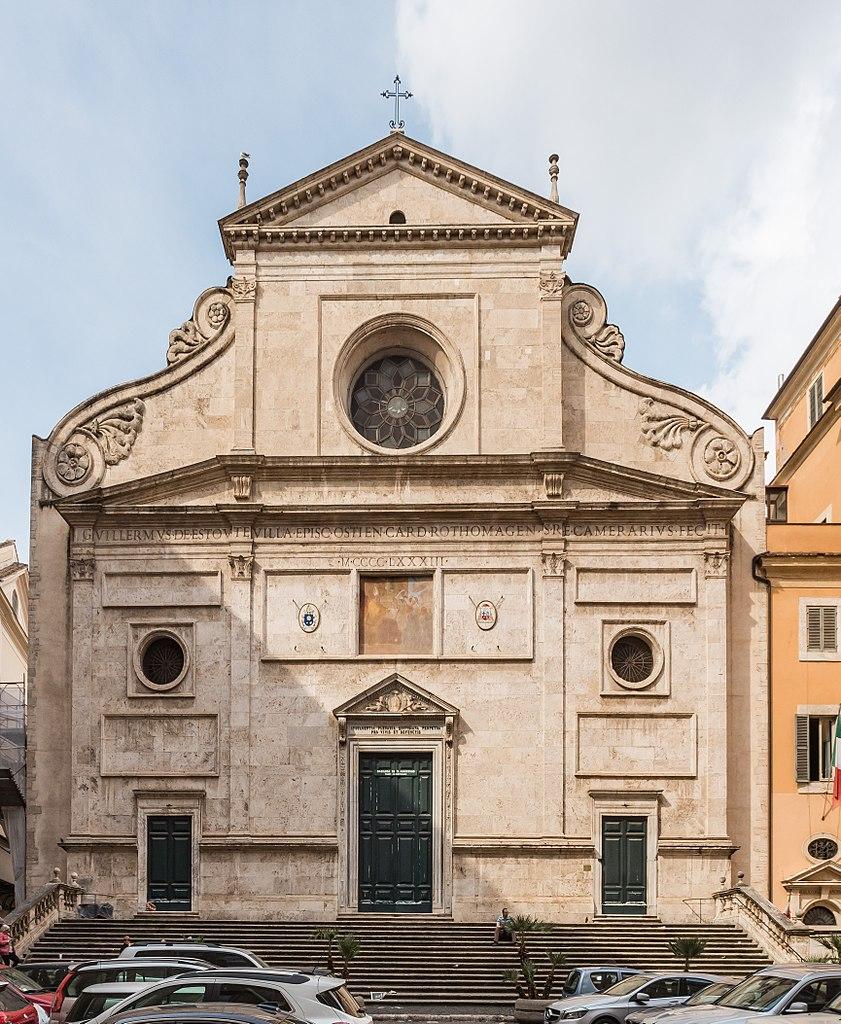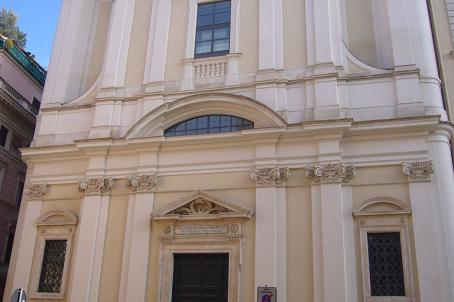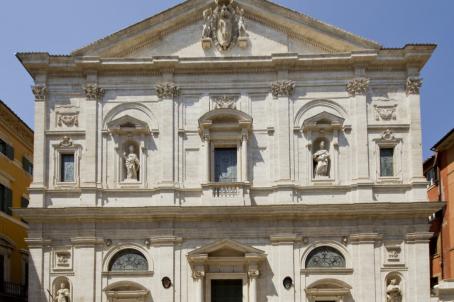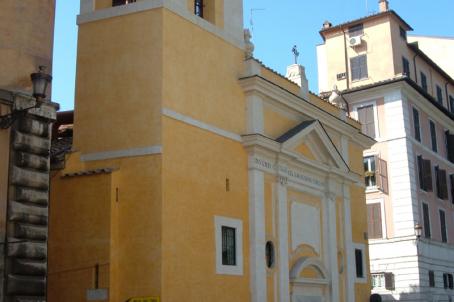Basilica di Sant'Agostino in Campo Marzio
The Basilica of Saints Tryphon and Augustine dates back to the 14th century, when the Augustinians, who were already officiating in the church of San Trifone in Posterula, decided to build a new structure for their convent and dedicate it to Saint Augustine. The church was built between the end of the 14th century and the beginning of the 15th century and completed around 1420. Too small and built too close to the Tiber, the church was rebuilt between 1479 and 1483. The façade, inspired by the church of Santa Maria Novella in Florence, has been attributed by some to Leon Battista Alberti and was built in 1483 by Jacopo da Pietrasanta.






